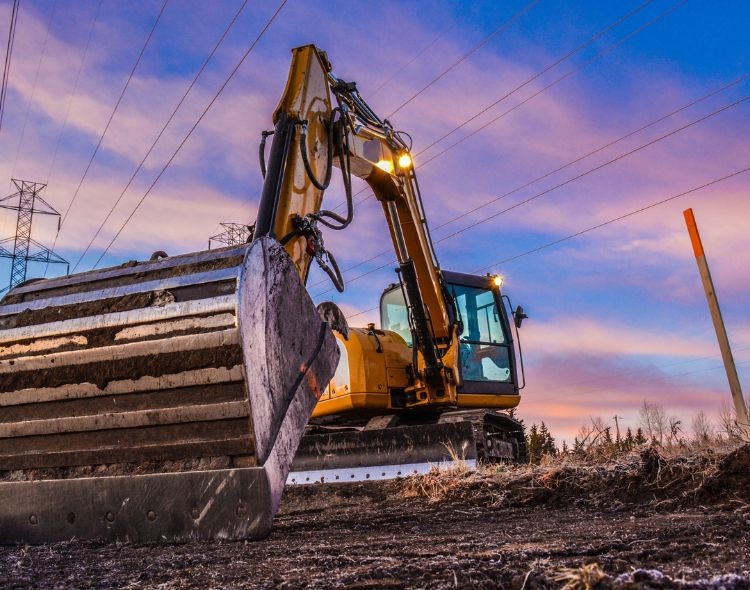Rochester Business Journal
Read the Article

New York’s strategic economic development initiatives are generating momentum across several critical objectives, such as addressing climate change, capitalizing on the CHIPS Act, advancing artificial intelligence (AI), attracting advanced manufacturing and revitalizing disadvantaged communities.
However, there’s a key element that could disrupt the progress — the lack of adequate electric infrastructure, both transmission and distribution, and its associated resiliency requirements.
In business, we rely on efficient market systems, along with sound engineering, to help us define problems, create solutions and capitalize on opportunities. Companies balance supply, demand and delivery to optimize sales of their products and services. Energy policy, on the other hand, tends to be driven by interest groups and politics. This results in laws and regulations that create discord in efficient market systems by artificially separating supply, demand and delivery.
It is time that we advance a new normal where environmental and economic sustainability jointly pave the way forward.
Establishing climate targets can lead to the unintended consequence of prioritizing supply over demand and delivery. This imbalance leads to downstream effects that could negatively affect ratepayers.
State agencies have developed programs and incentives to increase renewable production and achieve such goals as 70% renewable energy mix by 2030 and 100% zero emissions by 2040. To leverage those incentives, renewable energy developers maximize the size of their projects and emphasize land acquisition over proximity to transmission lines and load centers. Regulators then order utilities to build out the transmission system — not in response to economic activity and demand for electricity, but to simply ensure that the electric system is planned to meet climate-related objectives. This leads to costs which may be good for utility shareholder return on assets, but not so good for electric ratepayers as there is little connection between such costs and the needs of a growing market.
Over time, this supply-demand-delivery disconnect will intensify as the focus turns to reducing natural gas and gasoline usage in favor of electric vehicles, electric appliances, heat pumps and other electric devices. This shift will further increase electric demand and place added pressure on an under-equipped electric distribution system.
Developers are impacted early as they are required to adopt all-electric designs for new building construction — increasing electricity demand by up to 50%. Developers now need to fund months-long utility engineering studies and pay for any transmission or distribution upgrades to service new buildings. These costs and the lack of electric capacity tend to surprise developers, placing future investments at risk, especially in disadvantaged communities.
New York State is emerging as a destination of choice for advanced manufacturing, AI, semiconductor production and data centers. Consider the NY SMART I – Corridor Tech Hub, connecting Buffalo, Rochester and Syracuse, as well as Micron’s plans for Central New York. Progress is underway — but to achieve our greatest potential, we need to rapidly expand our transmission infrastructure and capacity while satisfying the renewable energy requirements specified in federal and state funding.
When choosing a location, the electric system is among the critical factors that drive the decisions of corporate site selectors. They thoroughly assess electric capacity, power quality, pricing and steady-state high demand near 100% load factor, especially for 24/7 operations.
In addition to job creation and investment, many state and federal economic initiatives now require climate-related commitments, such as sourcing 100% renewable energy. Wind, solar and other renewables are considered intermittent supply sources — which means they can’t yet provide 24/7 capacity even with grid-level battery storage. However, most advanced manufacturing companies require near perfect delivered power 24/7 to make their business models work. As a result, they purchase renewable energy credits that count against climate objectives but still rely on base load generation for delivered power. With adequate transmission in place, their demand for electrons could be met from anywhere. Unfortunately, to attract or expand targeted industries, that’s not the case today.
So, the big question becomes: Can environmental and economic realities be integrated to solve our climate challenges and achieve the economic opportunities before us?
I believe the answer is yes, if we utilize an efficient market system model.
First, we must accept that microeconomics has a role in transmission and distribution planning. Addressing local economic needs can contribute to climate change solutions.
Efficient market systems call for innovation and exploration. Nuclear generation is among the energy sources yet to be fully capitalized on in New York. We should embrace nuclear because it has a smaller footprint than solar and wind and can be located near load centers and existing transmission infrastructure, accelerating the move to zero emissions while fulfilling the promise of base load electric supply 24/7 to complement other renewable energy sources.
As an example of flexibility, a 300 MW Small Modular Reactor (SMR) requires a footprint of 15 acres whereas a 300 MW solar farm would require 1,500 acres (5 acres per MW).
Duke Energy and Microsoft have entered into a memorandum of understanding (MOU) that aligns power needs with climate objectives. This MOU involves Microsoft entering into long term Power Purchase Agreements connected to the build-out of nuclear generation. The state (via Duke Energy) moves its climate agenda forward while Microsoft receives price and power quality assurances through long-term agreements. New York can also work toward agreements with the various advanced manufacturing, data center, AI and semiconductor facilities seeking the same mutually beneficial objectives. An MOU of this nature has the potential of alleviating some of the climate and infrastructure costs that would fall to other ratepayers such as residential and small commercial and industrial companies. This has the potential of transforming energy infrastructure development from a regulatory cost into an investment in growth.
With more economic activity and industry attraction, New York will have more large commercial and industrial customers contributing to infrastructure expansion, thus placing downward pressure on the cost of energy allocated to ratepayers. With better utility infrastructure planning, the costs and needs will be more clearly defined and aligned. Market participants can then bring innovative solutions, such as microgrids, thermal and battery storage, to manage demand and distribution to compare and contrast against traditional regulatory and utility models. The efficiencies achieved through innovation and market participation will place further downward pressure on energy costs.
States like North Carolina and Nevada are actively gathering input from industry partners, such as Microsoft, Google and others, to shape a regulatory process that aligns climate and business needs. It’s an intentional effort from those states to better position themselves to attract chip fabrication, AI and advanced manufacturing, while also revitalizing disadvantaged communities.
Economic development can pave the way for New York State to meet its climate objectives in a manner that delivers a massive return on investment and overcomes cost concerns. It’s a balanced approach toward long-term, integrated environmental and economic sustainability.
Dennis W. Elsenbeck is the Head of Energy and Sustainability at Phillips Lytle LLP. He provides clients with energy consulting services and previously served on the New York State Climate Action Council.
Receive firm communications, legal news and industry alerts delivered to your inbox.
Subscribe Now